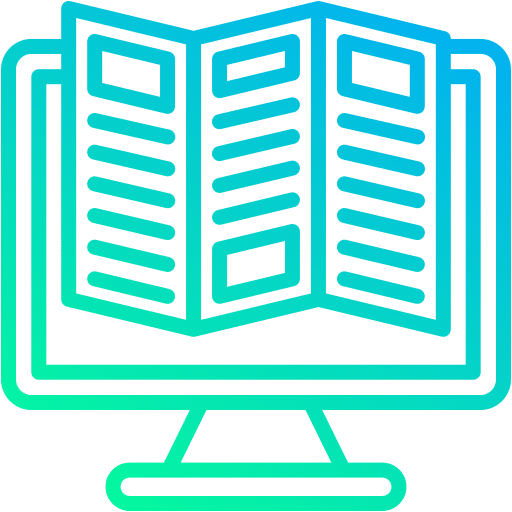When you think of onboarding, it’s not just about signing papers or getting welcome stuff. It’s about setting up newbies for success. That means showing them important company rules, teaching them about tools they’ll use, and giving job-specific training.

Comprehensive Step-by-Step Instructions to Utilize an LMS for Onboarding
You can do all this using an LMS for onboarding (learning management system). It saves time and makes the start memorable for new folks. This system helps organize everything so new hires feel ready for their roles. It’s like having a smooth and easy start, ensuring they know what they need while feeling good about joining the team.
What is an onboarding LMS?
Learning management systems (LMS) play a crucial role in corporate training. They’re not just for teaching; they excel in flawlessly onboarding new employees, partners, or customers. These systems are essential to making the start at any company smooth and hassle-free. Finding the right LMS for onboarding, Like Paradiso LMS, changes onboarding into an efficient process that benefits everyone involved and interested in discovering how this happens. Keep reading to uncover the secrets behind the success of effective onboarding with a suitable LMS.
How Does an Employee Onboarding LMS Simplify the Process?
Investing in an LMS for Onboarding might be a lot of work, but it pays off quickly. These systems are a game-changer for training your team, customers, and partners, starting with onboarding.
LMSs simplify onboarding by centralizing courses. It helps new members grasp your company’s way of doing things faster, flawlessly diving into the culture and processes.
They pack cool e-learning stuff like mobile and social learning, automation, and analytics. These tools measure how well your training works.
Smooth onboarding brings tons of benefits to your organization. It boosts productivity, builds more substantial teams, and helps retain talent. Stick around for why a smooth onboarding process is a game-changer for any company.
What Are The 3 Different Onboarding Processes?
Typically, onboarding introduces newcomers to your company’s work and what’s expected. Employee onboarding is famous, but there are other vital onboarding types. Extending this process beyond just employees is crucial for a well-rounded organizational integration.
Employee Onboarding:
Welcoming new employees dynamically and effectively is vital to integrating them into your company. It’s about more than just acquainting them with the workplace; it’s making them part of your organization. That means introducing them to your company’s values, goals, and culture while helping them connect with their colleagues and managers. Onboarding isn’t solely about orientation; it’s also about providing training that equips them with the skills and knowledge they need to excel. An LMS for onboarding plays a crucial role here by offering engaging and accessible learning content, enabling quicker integration and productivity.
Customer Onboarding:
Retaining existing customers is often more cost-effective for businesses than acquiring new ones. Customer onboarding LMS is pivotal, especially in industries where a customer’s value grows post-sale. Simplifying the customer’s initial interaction with your product or service is essential. Unlike straightforward services like Spotify, many B2B products require guidance to maximize their offerings. Effective customer onboarding ensures customers get more value sooner and reduces reliance on customer support, driving higher profitability.
Partner Onboarding:
Collaborating with channel partners can be beneficial but requires effort and effective communication. A seamless onboarding experience sets the tone for a successful partnership. Conversely, a good onboarding process can protect your business’s credibility and collaboration potential. Leveraging web-based training software for partner onboarding provides insights into how training impacts their performance and business success. This correlation validates your training efforts and showcases the tangible impact of training on partner success and overall business growth.
How can Onboard LMS Solutions Empower the Onboarding Process?
Having discussed the perks of using an LMS for onboarding, let’s explore its implementation. Employing an onboarding LMS, such as Paradiso onboarding LMS, simplifies onboarding, making it engaging, interactive, and adaptable for remote and on-site employees. The system seamlessly accommodates evolving learning needs without extra expenses. To leverage an LMS for onboarding, here are five helpful tips to get you started.
Crafting Your Employee Onboarding Journey
Embarking on the journey of integrating new team members effortlessly into your company begins by envisioning their destination – the point where they are fully assimilated into their roles. Start by delineating what constitutes a well-onboarded employee, considering aspects like awareness of company policies, IT systems, codes of conduct, HR processes, and role-specific responsibilities. However, remember that each business sets its parameters for onboarding success. To navigate this process effectively, consider mapping your onboarding as part of a broader roadmap that spans different time frames, progressively breaking down roles and responsibilities.
Creating Your Onboarding Material Experience in the LMS
Once you’ve defined the onboarding endpoint, the next step involves crafting the onboarding material within the chosen LMS onboarding. You can leverage the LMS’s built-in authoring tool, import existing content, or employ an independent authoring tool to develop the courseware. Regardless of your approach, utilizing diverse resources ensures engagement and participation from new hires. Centralizing all course materials within the LMS for onboarding provides a secure content repository and simplifies version control and management. Organizing content into learning paths allows for tailored onboarding experiences for different employee types, enabling learners to track their progress effectively.
Shaping an Engaging Onboarding Curriculum
Utilize your Onboard LMS features, design modules, and curricula that transform onboarding into an immersive journey. Seamlessly blend diverse media—videos, audio, images, and text—to weave a tapestry of learning that captivates and deeply engages new hires. Sequencing these modules logically and progressively ensures a cohesive narrative, avoiding disjointed information. Clarity in design fosters easy comprehension, allowing employees to navigate expectations effortlessly. Moreover, enabling a transparent view of their progress empowers employees to track their advancement through onboarding, fostering a sense of accomplishment and understanding.
Planning the Training Delivery Timeline
Visualize and arrange the timeline for module execution, determining where, when, and how content gets delivered. For blended onboarding, coordinate instructors to confirm live session dates and times. Sequencing activities and content here are crucial to ensure everything is evident during the process. Take ownership of your schedule by establishing a consistent start cycle and aligning it with recruitment schedules—empowering you with flexibility in scheduling.
Empower new hires to select their learning paths post-basic, aligning their journey with career aspirations. Your onboard LMS adapts to these choices, supporting your preferred approach flawlessly.
Monitoring Progress Through Analytics
The LMS becomes a pivotal tool for tracking progress and gathering learner analytics within the onboarding process. This data isn’t just numbers; it’s a treasure trove of insights. It plays multiple roles, ensuring completion of modules by learners, extending support to those encountering difficulties remotely, assessing how effective the onboarding program truly is, understanding how employees engage and learn, and even keeping tabs on the influx of learners over time. The metrics offered by the LMS encompass a spectrum of vital information, offering a comprehensive view of the onboarding journey.
Continuous Evaluation and Refinement
Harnessing the analytics furnished by the LMS for onboarding facilitates a continuous evaluation loop for your system. Regular assessments based on this data allow for nuanced adjustments, whether refining program content or implementing other necessary alterations. This iterative process becomes the cornerstone for elevating the program’s efficacy, aligning it closely with your organizational goals. The recommendation of a bi-annual review is strategic. It provides substantial data collection to analyze, offering a comprehensive snapshot of the onboarding journey. This analysis becomes the bedrock for strategic decision-making, enabling you to fine-tune the onboarding experience.
Some Proven Tips to Drive Success in Crafting a Unique Onboarding Experience
Similar to other business functions, specific tips enhance onboarding efficiency. Exploring these employee onboarding LMS tips through a video accelerates your understanding and implementation of quicker employee integration.
Key strategies include fostering engaging learning environments for collaboration and content sharing among learners and subject-matter experts. Furthermore, capturing and storing data on completion rates and engagement levels proves instrumental.
A crucial aspect involves leveraging onboarding for knowledge dissemination and creating an environment that motivates and engages employees, thereby reducing turnover rates.
By adhering to these fundamental guidelines and incorporating a robust LMS, you’re poised to optimize your onboarding procedures effectively. The importance of a reliable employee onboarding LMS cannot be overstated in facilitating these practices and ensuring a streamlined onboarding experience for your workforce.
Conclusion
Onboarding programs paired with an LMS offer a powerful solution for handling new hires. They streamline the process for your Learning and development team and ensure a smoother experience for introducing newcomers to your company culture.
Schedule a demo session with Paradiso onboarding LMS today to explore how this system simplifies onboarding and discover how you can leverage learning management systems for your organizational needs. It’s a chance to delve into how an LMS for onboarding can make your programs more efficient and explore additional functionalities it offers beyond just onboarding.











